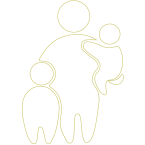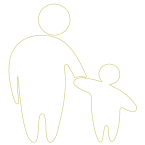Wellness Series - Part 2: Major Life Changes and Wellness
Welcome to Part 2 of the 3 Part Wellness Blog Series. This post will address Major Life Changes and Wellness.
What is Wellness? According to a definition from Pfizer’s website: “Wellness is the act of practicing healthy habits on a daily basis to attain better physical and mental health outcomes, so that instead of just surviving, you're thriving. To understand the significance of wellness, it's important to understand how it's linked to health. According to the World Health Organization (WHO), health is defined as being ‘a state of complete physical, mental and social well-being and not merely the absence of disease or infirmity.’
Several key areas of your lifestyle are considered dimensions of overall Wellness. They include: social connectedness, exercise, nutrition, sleep and mindfulness. Each one has an impact on your physical and mental health. By making simple and healthy choices on a daily basis, you will be well on your way towards reducing stress, having positive social interactions and achieving optimal wellness.”
How are the above wellness areas impacted by major life changes? One way is disruption in routine. Sometimes these disruptions can be opportunities for growth and change. Sometimes these disruptions present multiple challenges, new or previously encountered. Regardless of the impact of these disruptions on our wellness, adaptation is key.
How does this kind of adaptation occur? First, examine how each of the dimensions of wellness are faring through this major life change: social connectedness, exercise, nutrition, sleep and mindfulness. Are any of those dimensions in need of support? If yes, an inventory of what has worked in the past to relive stress and or cope with previous life changes can be helpful to identify what worked, what could work again and what isn’t going to help in this situation. Asking if any of those approaches can be put into place now can help to formulate a care and support plan. If not a solid yes, what needs to change to make those approaches possible? For example, someone has moved and one of their coping skills was to go for a walk in the nearby park, but where they live now doesn’t have a park. What needs to shift to make walking happen? The coping skill of going for a walk can still be utilized, but needs a modification to make it happen.
An examination of what hasn’t helped in the past can also be of benefit. Previous coping skills can be set aside for the moment, in the service of finding what will work for the current situation. Sometimes unhealthy coping skills are set aside in search for healthy ones.
Sometimes it’s difficult to engage in this type of self-reflection, particularly if the major life change is having a negative effect on one or more dimensions of wellness. In these situations, sometimes shifting perspective can bring new light. Asking “what would I say to a friend in this situation?” can bring new ideas. Imaging life as a movie and writing out the next several scenes can do the same thing.
Another tool that can assist in creating space for adaptation and change is building up self-compassion, which is bestowing the kindness you give to others on yourself. The Center for Mindful Self-Compassion describes self-compassion as having three components: mindfulness vs. over-identification, common humanity vs. isolation and self-kindness vs. self-judgement. Moving from a place of mindful self-compassion may mean taking things slower, saying “no” to more things and creating more space, physically, emotionally, mentally and/or spiritual, so as to care for the self in a more holistic manner. When there is space for love and nurturance, dealing with the challenges that major life events present may become easier. For those who wish to explore this further, there are many free mediations and practices that explore self-compassion at the Center for Mindful Self-Compassion’s website.
Thank you for joining part 2 of our Wellness Blog Series. Continue learning, part 3: Everyday Wellness.



